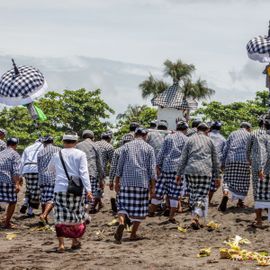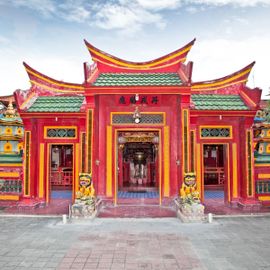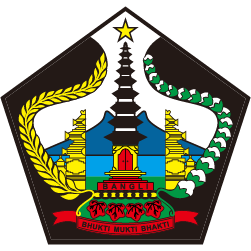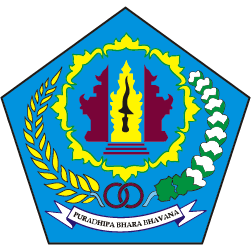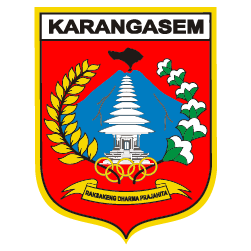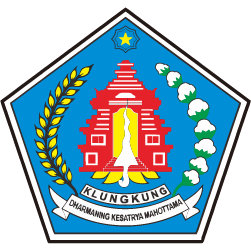The Power Of Meaning In Black And White, Balinese Poleng Fabric
The Power Of Meaning In Black And White, Balinese Poleng Fabric.
Color has become a symbol of expression. In Bali, the various ornaments in buildings and colors are closely related to cultural identity. When you set foot on the Island of the Gods, you will find a lot of symbols which represent the value. As is the case with black and white on Poleng Fabric. The color does not necessarily exist without purpose. The color has the power of meaning in its description. What is the power of identity to convey in that color?
Black and white Poleng Balinese cloth is patterned like a chessboard. In Bali certain objects such as palinggih or worship monuments, statues covered with Poleng Cloth. Ornaments on the edge of the road like banners and a few umbrellas installed. You also will find Poleng clothes in a sacred large tree. Pecalang in Bali is also required to wear a black and white headband with a checkered pattern. So, what’s the meaning of the black and white color?
Poleng is a term used to refer to black and white. The contrast color symbolizes two different things that cannot be separated. The two properties in contrasting colors become symbols of balance and harmony. Like day and night, good-bad, hot-cold, regular-chaotic, right-wrong and so forth.
There are 3 types of colors in Poleng terms. First, the black and white which is called Rwa Bhineda. Pecalang, as a security officer, is required to wear this Rwa Bhineda headband, because he is able to distinguish between good and bad, right and wrong, orderly and chaotic.
Second, it is called Sudhamala in black, white, gray. The gray color in the Sudhamala Poleng Fabric depicts the intermediate nature between contrasting, black and white. Third, Tridatu, which has black, white and red colors. The red color in Tridatu is a symbol of Creation (Lord Brahma), the black color is a symbol of Nurturing (Lord Vishnu) and white is the symbol of Smelting (Lord Shiva).
Even though they have different symbols and color compositions, the three types of Poleng Fabric mentioned above have the same philosophical meaning, which is to maintain balance.
Symbols come to life because they are attached to values. Values become the grip of every attitude and become the identity of local beliefs. If you visit the Island of the Gods, you won’t only find objects or rites covered in Poleng Fabric. You will also see various forms of sculpture that also symbolize the depth of attitude in doing their beliefs. Not only does it have a meaning in describing the belief of local people, but certain objects in Bali also have a very high artistic value.
